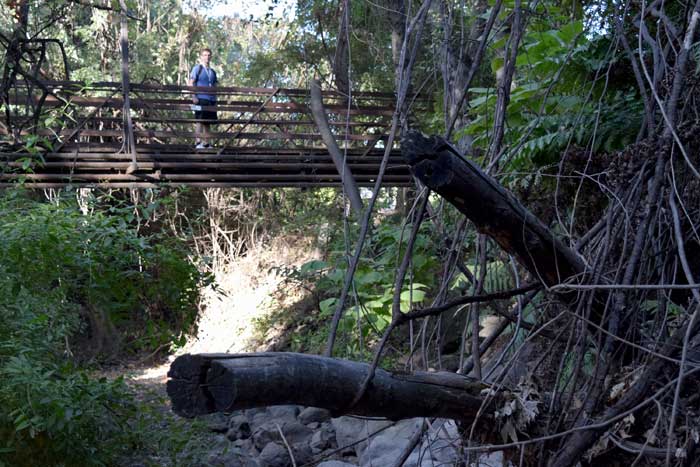
The thought of falling tree branches is usually associated with an intense winter storm with high winds. While storms can cause branches and trees to fall, hot summer days can do the same. The average summer day in Chico can lead to large branches crashing down without warning.
This happened in August 2013, when a branch that had built up too much water fell on a student, killing her. The branch fell due to a common occurrence in trees during summer weather.
This phenomenon is called summer limb drop. The combination of hot weather and no wind allows trees to draw water constantly throughout the day. As the day runs its course, the tree gets heavier and heavier. If a branch becomes too heavy, it will snap off without warning.

“That’s why summer limb drop is kind of a weird phenomenon, it happens when you think it shouldn’t happen,” Michael Alonzo, supervisor of grounds and landscape services, said. “For reasons you think would cause a tree to get lighter, it actually gets heavier.”
When water flows through a tree from the roots and evaporates off the leaves, it builds up pressure. If enough pressure builds up in a branch, it will essentially explode from the inside out, which sounds like a loud pop, Alonzo said.
A sudden increase in water weight can also weigh a branch down and cause it to fall, Alonzo said. If the ground has been dry for a while and suddenly becomes wet, the tree will soak up the moisture immediately, quickly adding a lot of weight. This can be caused by a summer storm, the first rainfall of the year or overwatering.
Summer limb drop is most common in oak trees because branches will fall if they soak up too much water. To reduce the danger of falling tree limbs, Alonzo and his staff visually monitor all the trees across campus, especially oaks.
“Including myself, we have 11 staff members on campus that keep their eyes peeled,” Alonzo said, “And are constantly monitoring the trees visually for hanging limbs, suspect limbs that look like they’re drying out or anything out of the ordinary.”
Each staff member has a specific section of campus to monitor. If a staff member notices something off about a tree, an arborist from an outside vendor will help decide what to do. Their company will then be contracted to take care of it.
While the grounds and landscape staff try to mitigate the danger, it’s hard to see the signs of summer limb drop because the branches look healthy prior to falling, Alonzo said.
To keep branches from falling, trees are also trimmed on a regular basis. Large branches that are either too heavy or weakly attached to the trunk are removed, Alonzo said.
Efforts are also being made to keep the trees healthy on campus through the drought.
“The larger trees are, for the most part, doing very well throughout the campus,” Alonzo said. “Part of that is because we’ve been following up and manually watering a lot of the large trees.”
To water the trees, a truck with a 500-gallon tank dumps water on every tree that needs it. The trees that are watered are tagged with a blue ribbon, and each tree is usually watered once a week, Alonzo said.
Most of the trees being watered are in the dead lawns. Before water was cut off by nearly seven acres of lawn to conserve water, trees were watered by sprinklers.
While most of the trees across campus have stayed healthy throughout the drought, smaller trees along the creek are dying, Alonzo said.
He added that many of these trees have been dying because the creek that runs through campus has been dry for more than a month now. The water flowing through campus is controlled by the dam at the One Mile Recreation Area, and most of the water stops there to keep the pool full.
No matter what the conditions, students should stay vigilant of their surroundings, Alonzo said.
“There’s always a risk,” he said. “It’s really hard to tell, even (for) arborists. Once they’re done working a tree, moving dead limbs, taking off weight, thinning out the canopy, none of them will ever say ‘this tree is now safe.'”
Austin Herbaugh can be reached at [email protected] or @aherbaugh14 on Twitter.








